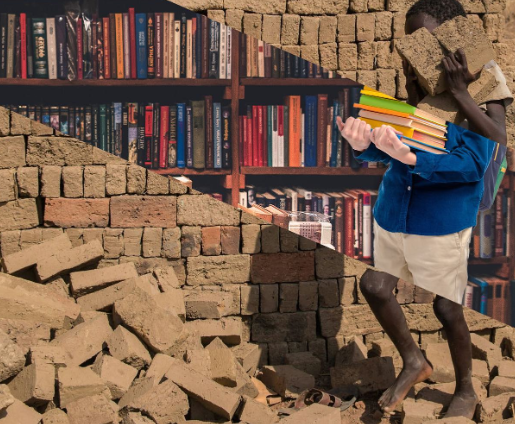Nearly two-thirds of South Sudanese children surveyed aged between 5 and 17 years are engaged in the worst form of child labour, with rates soaring to as high as 90 percent in the worst-hit regions, according to a new report by the Ministry of Labour, Ministry of Gender, Child and Social Welfare, and Save the Children.
According to a press statement extended to this publication on Thursday by Save the Children, the landmark National Child Labour Study involved more than 418 households from across seven states in South Sudan and found that 64 percent, or nearly two in three children surveyed, were engaged in the worst form of child labour, which include forced labour, sexual exploitation and involvement in illicit activities like stealing, drug abuse and armed conflict.
“In some parts of the country, the survey found nearly all children were involved in child labour. In Kapoeta South, 90 percent of children were engaged in child labour, with gold mining, pastoralism, and farming combining to keep children out of school and working to support their families,” the statement reads in part. “The report also found that local conflict and child marriages are contributing to extremely high rates of child labour in Yambio region, with 90 percent of children surveyed found to be involved.”
According to the report, children usually move from ‘light’ to hazardous or coercive labour, progressively reaching the worst forms that leave them enslaved, separated from families, exposed to serious hazards,
illnesses or left to fend for themselves, said Save the Children.
About 10 percent of children surveyed reported experiences linked to conflict-related engagement with armed groups, particularly in counties of Akobo, Bentiu, and Kapoeta South.
The children reported to have been involved in a wide variety of activities, ranging from tasks such as cattle herding and farming to jobs such as gold mining, brickmaking, street vending, and fighting alongside
armed groups.
According to the report, boys are more often exposed to hazardous and military-related labour, while girls face heightened risks of domestic work, child marriage, and exploitation. The report also revealed that caregiver awareness does not guarantee protection for the children involved, with the survey finding over 70 percent of children involved in hazardous work come from households where caregivers were aware of child labour laws.
“On their part, children were found to be broadly unaware of existing protection services, with only 33 percent aware of any protection or support service available in their area, highlighting severe service gaps and fragmented referral systems,” the statement said. “The findings come at a time when a collision of crises has created food shortages across South Sudan, with 7.7 million people – or 57 percent of the population – facing acute levels of hunger and putting 2.3 million children aged under 5 at risk of acute malnutrition.”
“No child should have to work when they should be learning. When children are forced into labour, they are denied their basic right to education and the chance to build a better future,” said Anthony, 16, a Child Representative in South Sudan. “Let us stand together and say no to child labour, let us protect every child’s right to grow, learn, and succeed. Every child in South Sudan deserves the opportunity to dream and to become who they are meant to be.”
Speaking during the launch of the report in Juba, Deng Tong, Undersecretary, Ministry of Labour, said the national study provides a critical foundation for action.
“We must build on this evidence to establish a national child labour database that enables continuous monitoring and informed decision-making,” he said. “As the Ministry of Labour, we are at the forefront of protecting our children across the country–raising awareness that child labour is unacceptable and that education is every child’s right. Let us now move from commitment to implementation, from promises to protection, and from words to results.”
“Together, we can make child labour a thing of the past and give every child in South Sudan the chance to dream and to thrive,” Tong added.
Meanwhile, Public Service Minister Dak Duop Bichiok, who represented the Minister of Labour, said the study has provided evidence for policy reforms.
“This study has given us the evidence we need to reform policies, strengthen protection systems, and ensure that every child in South Sudan enjoys their right to education, safety, and a childhood free from exploitation.”
For his part, Save the Children’s South Sudan Country Director Chris Nyamandi said that when nearly two-thirds of a country’s children are working, and in some areas, almost every child, it signals a crisis that goes beyond
poverty.
“Education remains the strongest protective factor, with children who attend school far less likely to be engaged in exploitative labour. This shows the incredible value of education in South Sudan,” he said. “Equally, the report highlights that children from food-secure households and educated caregivers face significantly lower risk, underscoring the link between poverty reduction and child protection.”
“If we strengthen education, rebuild livelihoods, and prioritise child protection, we can reverse this trend. Every child deserves the chance to learn and thrive, not to work to survive,” Nyamandi added.
For her part, Barbara Egger, European Union Representative, said every child deserves the chance to learn, grow, and become a leader of tomorrow.
“The European Union stands proudly with the children of
South Sudan, the government, and our partners, including Save the Children, to close legal and policy gaps, strengthen education and social protection, and ensure no child is left behind,” she stated. “Together, we are turning commitments into action, so that every girl and boy in South Sudan can realize the future they rightfully deserve.”




